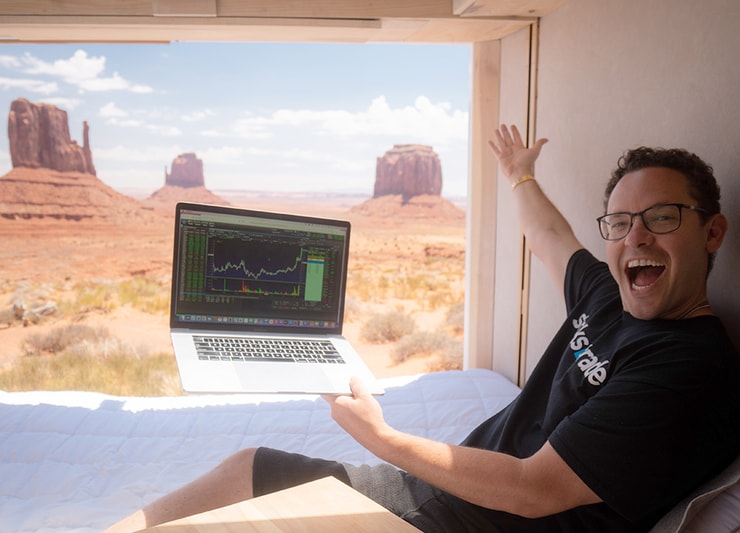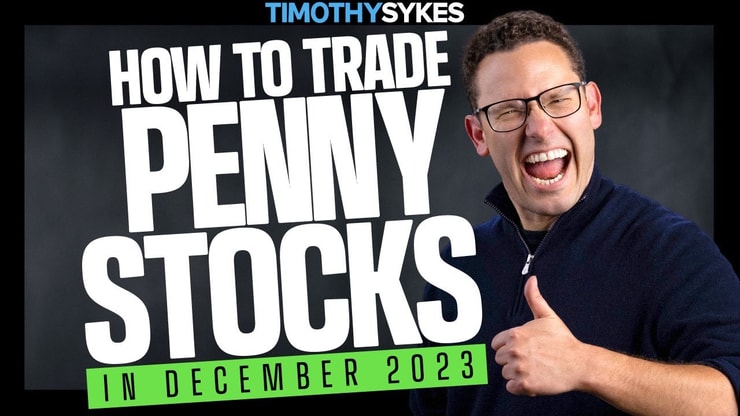For some traders, playing a stock that’s already up more than 50% in a single day is a no go.
They just don’t know how to handle the volatility, manage the trade, and not let their emotions get the best of them.
Unfortunately, if you want to be successful day trading in this market…then you must become comfortable with trading these wild moves.
Believe me, it’s not something I prefer…
But there is a way to trade them without getting wrecked.
I proved that again yesterday when I traded the ticker symbol CCCC, a stock which doubled within the first three hours of trading, going from $1.18 to $2.43.
But that’s nothing compared to XGPT’s late day signal that led to a monster +69% potential trade overnight.
You might wonder how it’s possible to stay calm when a stock is skyrocketing so quickly…but I had extreme confidence thanks to 4 key reasons.
I know, it sounds risky, and it can be, but with these 4 lessons, you’ll see how calculated risks can turn into calculated gains.
Table of Contents
XGPT Traded CCCC Better Than Me
If you follow my trading then you know one of my greatest weaknesses is impatience. I have a difficult time holding onto winning trades. Luckily, I’m also impatient when it comes to losing trades. Whenever I’m feeling heat, I bail quickly.
And that’s what happened yesterday when I tried to trade CCCC for a second time.
I tried for a second dip buy, but this time I sized up. But because I sized up, I left myself little wiggle room, and bailed on the trade when the stock was trading slightly below $2.
It ended up closing the day at $2.34…so while I had the right idea, my sizing was off and I took a small loss.
But you know who didn’t mess up the trade?
You see at around 3:15 PM ET…the AI delivered its topic to subscribers. And it was none other than CCCC.
It set it’s buy alert at when the stock was at just $2.55.
CCCC went on to hit $3.46 in the after hours yesterday!
That’s a +35% move…
…but it wasn’t done…
Shares continued their climb the next day, pushing as high as $4.31, a +69% gain in less than 24 hours!
69% GAIN off of $CCCC 🔥 $CCCC, alert generated around 3:15PM EST yesterday, entry price at $2.55
🚨: Don't miss the next XGPT Alert: https://t.co/ccEPuYLnNf pic.twitter.com/H1Fw0UMEN4
— StocksToTrade (@StocksToTrade) December 13, 2023
So yeah, XGPT is already better than me at playing for bigger moves.
And while it’s still relatively new to the public, XGPT has already delivered some massive wins to subscribers.
It just doesn’t give you automated stock picks, it also delivers automated trading plans with detailed analysis.
Lesson #1: The Power Of Positive News

A lot of the big stock movers over the last few months have been catalyst stocks.
However, the main catalyst has been stubborn shorts getting overly aggressive and creating massive short squeezes.
Most of these stocks that have had triple digit one day moves didn’t really have substantial news…
In fact, most of them were crappy stocks with weak press releases.
But every now and then, you’ll find a big mover that has ACTUAL news…
And what I call a Legitimizer.
You see, C4 Therapeutics (NASDAQ: CCCC) received an exclusive agreement to license and research with Merck to discover and develop degrader-antibody conjugates (DACs).
Merck has a market cap north of $265 billion…
For them to want to do business with CCCC validates CCCC and legitimizes them.
I like this type of news because it gives me greater confidence in dip buying. That is, if the stock sells off at any point during the session, there’s a better chance it bounces back up because the news is strong.
Lesson #2: The Art of Entry and Exit

Now, one of the challenges of trading fast moving stocks is fighting off FOMO. After all, you hear a tiny company doing a collaboration deal with Merck, makes you believe the stock is going to fly.
However, you still have to manage risk. You can still lose money even if you know what the likely outcome will be.
Just look at all these stubborn short sellers. They are probably right on their thesis 99% of the time. The stocks they are shorting eventually do crash. But that doesn’t mean they are all making money on the plays.
In fact, most of them are getting destroyed because the stock rips significantly higher than they think, causing them to cover and take massive losses.
And although not nearly as risky as short selling, chasing a stock up can lead to some heavy losses.
That’s why I prefer to wait for a sell-off, specifically, a panic sell-off, where I can dip buy.
CCCC had a pre-market high of $2.18…
I got my opportunity when the stock dipped to $1.84. And before you knew it, I was out at $1.98.
Lesson #3: Learn from Price Action

Another key variable witnessing all these spikers has been float. Typically, low float stocks have experienced greater moves.
In the case of CCCC, the float wasn’t really that small, somewhere north of 40 million shares.
So how did that impact my trading?
I was planning on keeping a tight leash on the trade.
My goal was to get in and out quickly for a profit…and not to stick around for too long.
And if I was wrong…get out immediately and take a small loss.
The trade ended up working out…and I managed to make a quick profit.
In hindsight, my exit was premature, the stock traded significantly higher than my $1.98 exit.
And despite the large float, the stock traded several hundred million shares.
Am I upset that I got out too early?
No, because I followed my training plan. And worked with the information I had at the time. It’s easy to second guess yourself after a trade.
My job isn’t to be the best trader…it’s to be the best teacher. My goal is to show my students how I safely get in and out of these crazy stocks without it being stressful.
Congrats to everyone who uses https://t.co/6cuTVNItqN and nailed $CCCC $ALT or $ADTX today….sooooo many big runners, you gotta love this market if you're prepared to capitalize on allll the volatility! How'd you do so far today, did you crush it like my top students & I did?
— Timothy Sykes (@timothysykes) December 12, 2023
Lesson #4: Recognizing the January Effect

This final lesson is one you want to remember and pay close attention to.
As the year draws to a close, investors, including companies and individuals, often engage in tax-loss selling.
This strategy involves offloading underperforming stocks before the year’s end, primarily during the months of October, November, and December.
It’s important to note that this is not legal or financial advice. Always seek guidance from a licensed professional in your area for tax or legal decisions.
While many individual investors align their financial year-end with December 31, various mutual funds and companies might conclude their fiscal year earlier, in October or November.
The rationale behind this sell-off is strategic: investors aim to offload their losing positions by the end of the year.
This move enables them to report these losses on their tax returns. If they defer selling until January or February, they would have to wait an entire year to claim these losses.
Therefore, realizing losses before the year’s end can present a tactical advantage.
Over the next several weeks we’re going to see a lot of these “January Effect” stocks rally.
Prior to yesterday, CCCC was trading near its 52-week lows, making it a good January Effect candidate.
🌟 Master the Art of Trading with AI: Unveil the Secrets of High-Flying Stocks! 🌟

Are you intrigued by stocks that surge over 100% in a single day? Curious about how to trade them without getting burned?
The volatility and unpredictability can be daunting, but with the right tools and knowledge, these wild moves are not just manageable—they’re potentially profitable.
🔍 Unearth the Power of AI in Trading: Discover how XGPT can transform your approach!
🔍 Experience Real-Time Analysis: Dive into live demonstrations of AI-driven strategies!
🔍 Stay Ahead of the Game: Learn how to manage emotions, understand market dynamics, and leverage AI for smarter entry and exit decisions!
🔍 From Theory to Practice: See how AI tools like XGPT can turn calculated risks into calculated gains, even in the most turbulent markets!
Ready to trade smarter, not harder?
Eager to embrace the new era of AI-assisted trading? Don’t just watch the market—predict and conquer it with the power of XGPT!
🚀 Your Journey to AI-Powered Trading Excellence Begins Here.
Join Our Exclusive Live Training! 🚀





Leave a reply